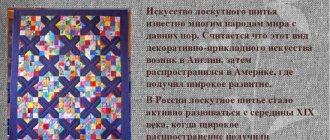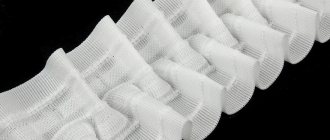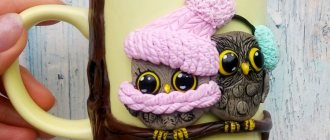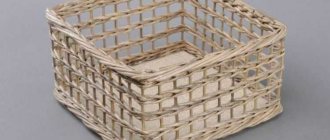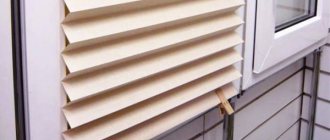Manufacturing secrets
Children's blankets are often made from pompoms with their own hands. High-quality soft threads are chosen for it. The item should be warm and soft, not irritating the baby’s delicate skin.
To make the pompom blanket look beautiful, use new threads. The thing will look professionally made only if you work on a base frame where the distance between the pins or studs is the same.
Articles on the topic (click to view)
- Photo curtain for the kitchen
- Kitchen interior with black and white curtains
- Photos of beautiful curtains with eyelets
- Photo of voile curtains for the kitchen or living room
- Photo of a bedroom interior with beige curtains
- Tips on how to choose curtains for the bedroom: photos of interiors
- Curtains for an arch in the hall or kitchen
To control it you need to measure it. The work requires time and accuracy, but not special skills.
Sometimes they create a base mesh for a blanket by arranging the threads in two layers, which have different directions. In this case, the thing will turn out more interesting and denser.
If the skin on your hands is sensitive, it is better to use protective gloves or a patch to prevent calluses from appearing in areas of friction with the thread. This is not a common occurrence, but can still occur if the threads are stiff enough.
Master class on creating a baby blanket from pompoms with your own hands
To make it you will need:
- Wool acrylic yarn (white, peach and coral colors);
- Plywood sheet (according to the desired bedspread size);
- Nails (from ten centimeters);
- Hammer.
We begin to create a miracle.
1. Drive nails along the perimeter of the plywood, at a distance of five centimeters.
2. Wind the threads around them, first vertically, then horizontally, one at a time. The colors are created in layers (for example, white, coral on top, and peach at the very end).
3. Last stage: exactly in the middle, between the intersections of the yarn, you need to cut the threads of the two upper colors.
4. The edges can also be cut between the nails. And that’s it, the soft and cozy blanket is ready! It can be decorated with bows, frills or other decorations.
This is such a cute product. Kids love it because it tickles the skin so nicely and they can play with it.
Where to start
Expert opinion
Smirnova Ekaterina Anatolevna
7 years of experience in interior design, professional architect
Having the necessary materials, anyone can make a blanket from pompoms if they strictly follow the sequence of its implementation. It’s inconvenient to buy more things as you work, so it’s better to stock up on everything at once. For the item you will need:
- frame – wooden base or thick cardboard, which is suitable for small models;
- new yarn of two colors - one is required for the base, and the second for pompoms. The amount of material depends on the size of the item, but usually a standard blanket 150 cm by 100 cm takes from 10 to 14 skeins weighing 350 m. Exactly how many threads are needed for a pom-pom bedspread is determined by the length. For an item 80 by 80 cm, on average you will need from 5 to 7 skeins;
- sharp scissors;
- curved needle - needed when connecting threads on the frame.
Further work will only require patience, since the process is long and requires painstakingness.
Unusual techniques
Frame is a name familiar to Russian people, but the correct name for frame is luma.
Tools and materials you will need to make a pompom blanket:
- wooden square or rectangular frame;
- nails;
- hammer;
- scissors;
- yarn of two colors.
The size of the frame should be the size you would like the finished product to be. But after removal from the frame, the product will shrink a little, by about 10 centimeters, so you definitely need to take this into account.
The frame shown here is square, the sides are 1 meter long. If, for example, you want to knit a blanket for a sofa, then such a frame will no longer work, then you need to make a rectangular one, the size depending on the size of the sofa.
The frame can be of this shape:
It will not be easy for women to make such a frame on their own; it is better to ask a man. When the frame is ready, you need to drive nails into it at the same distance from each other, in the middle of the wood, so as not to split it. The distance between the nails can be 3, 4 or 5 centimeters, at the discretion of the craftswoman. The most optimal size of nails is seventy, but larger sizes are possible so that the threads do not fall off. You can also ask a man for help hammering nails. The photo shows that 26 nails were used on each side. It is better to wipe the nails first and remove the grease from them so as not to stain the yarn.
Related article: Learning to knit on a knitting machine
So, the frame for the blanket is ready! By the way, you can use 5-7 mm plywood instead of a frame, or, as a last resort, chipboard.
But the base frame can also be made from thick cardboard.
You need to choose the softest and most delicate yarn; 100% acrylic is ideal for this purpose. In the absence of allergies, half-wool and wool can also be used, but you must pay attention so that the threads are not prickly. In this case, yarn from 100% acrylic “VITA Baby” (400 m/100 g) was used: 3 skeins of white and 5 skeins of blue, it should also be taken into account that in addition to threads for winding, threads for tying knots are required.
Now the next step is to wrap the threads around the nails.
How to make a blanket from pompoms with your own hands
Making blankets from pompoms with your own hands is a step-by-step process in a certain sequence. Instructions for operation are required only the first time, and then
The craftswoman herself will be able to teach anyone the tricks of making airy blankets from pompoms.
How to make a frame
The frame is made from slats that are connected to each other, or from a sheet of plywood. Both options will be convenient for work.
The size of the base is selected depending on what kind of item you want to receive. Blankets made of pompoms on a cardboard frame are made only if they are very small - no more than 25 by 25 cm.
In a thick sheet of cardboard to obtain the base, slits are made at a distance of 4 cm to fix the threads.
If slats are used, then they are connected to each other using a screwdriver, having previously cut out grooves with a jigsaw or file so that some slats do not stick out above others. With plywood everything is simpler - you just need to mark it along the edges for driving in nails.
They will need to be tall, since there will be quite a lot of threads wrapped around them. The slats are marked after they are connected to the frame.
The distance between them is 4 cm. Frames for the blanket are easy to make.
Yarn tension sequence
One row consists of 50 threads, and at the places where it intersects with another row there are 100 of them. Pom-poms will be made at these points in the future. The threads must be pulled in a certain sequence.
First, take the yarn for the base of the product and stretch it so that there are 20 threads in each row, and 40 at the intersections. Tie the first thread to the upper left nail on the frame.
Next, take the yarn for the pompoms and, also, tying it to the upper left nail, begin to pull it, like the first one, or diagonally. A row of new yarn should consist of 30 threads and
at the intersection of 60. In total, at the intersection of the rows of both layers, you get 100 threads. Blankets made from pom pom yarn will be denser if the top layer is stretched on the bias.
Tying and cutting yarn
You need to tie the pompom blanket correctly. Mistakes can cause the item to fall apart when cut.
Expert opinion
Smirnova Ekaterina Anatolevna
7 years of experience in interior design, professional architect
Tying the intersections of the rows is the most painstaking and difficult stage of manufacturing. Be sure to wrap your fingers with adhesive tape to prevent calluses from forming.
They tie it very tightly crosswise and then cut off the excess ends of the thread. It is important to grab each warp thread, without missing those located below.
Having knitted the base, they proceed to cutting the threads to obtain pompoms. Cut them with sharp scissors, touching only the threads of the second layer. The lower main one should remain unaffected.
At the last stage, when all the pompoms have already been made, the product is cut off from the frame. After this, free ends of the threads remain at the edges. They are trimmed evenly and become the fringe of the plaid.
Tools for making blankets from pompoms
For her favorite hobby, a craftswoman will need a frame and several skeins of multi-colored thread. This frame should be made by a loving husband.
To do this, you need several slats, preferably made of dense hardwood. Birch, poplar, and ash are suitable. Of course, denser ones - beech, walnut or oak will also come in handy, but the final product will be too heavy.
You can take a large piece of thick plywood 5-7 mm, or, in the worst case, chipboard.
- Nails with wide heads.
- Monolithic plywood construction, the most durable and reliable.
- Hexagonal “professional” frame for creating complex multi-color compositions.
- A small “test” design, which can later be used for weaving small napkins.
Coniferous species can also be used, but the wood should be varnished or painted so that the resin does not protrude onto the surface.
Nails in such a structure need to be driven much deeper, since soft wood loosens quite quickly. The structure must have a fair amount of strength, since during the winding process the threads will be pulled quite tightly. It is better to strengthen the corners with jibs.
The sides can be made longer from the bottom - these will be the legs. This way, there will be no need to place the frame on a chair or lay it on the floor.
Read also: Handmade blankets and bedspreads
The dimensions of the product depend on the expected size of the blanket for the sofa or for the children's bed. Depending on the type of thread and tension force, the “shrinkage” of the blanket can be 5-10cm. The most convenient sizes for work are from 80x80 to 100x100mm, but basically it all depends on the size of the blanket that is comfortable for you.
Seventy-gauge nails are driven into the finished wooden frame; in dense wood, it is recommended to pre-drill holes of a slightly smaller diameter so that the plank does not split.
A large corner folding sofa is an important purchase, and here you should pay attention to every little detail. To begin with, you should clearly decide where the furniture will be placed, determining its approximate dimensions.Today, the most popular among Russian consumers are modular corner sofas for the living room. They are produced in two types: sectional and transformable. Read more about corner sofa models here.
The distance between the nails varies in the range of 3-5 cm. The smaller the distance, the denser the blanket will be and the harder it will be for the craftswoman to work. The number of nails should be in pairs. For a blanket measuring 80x80, you will need 20 of them on each side of the square.
The distance of the first nail from the inner corner of the frame should be half of the selected marching interval.
Secret No. 1. If possible, use nails with decorative or furniture heads. The risk of thread breakage with a wide cap is much lower.
Interior Weaving Pompom blanket or first pancake Yarn
Hello dear needlewomen. Here is my debut.
We made our own blanket from pompoms. Unfortunately, there are no first photos (I can’t find how they fell through the ground) of how we made the frame.
But I’ll tell you a little about him. We took 50*50 bars, the height was 2m and the width was 1m.
I’ll say right away that you need more bars, not only at the top and bottom, but also a couple of bars in the middle, because after tension, one of our bars bent.
The blanket turned out to be 1.65m*1m, perfect for an adult.
The nails were driven at a distance of 4 cm. It took about 150 nails, that's three packs of 100mm in size. There were about 35-38 rows of threads.
Because I didn’t fully calculate the amount of yarn to make 50 rows, but for our large blanket it was enough (the blanket turned out to be a little heavy, although given its fluffiness this is even a plus) At the beginning I had 24 (12 black and 12 light green) skeins of acrylic threads (110 m in a ball), this seemed not enough to me, and I wound up about 400 m of mixed black threads, but it turned out to be 12 pieces of light green.
I also didn’t calculate the yarn for tying the pompoms themselves, so here I ended up with a hodgepodge of different colored threads. But most of them were ordinary white ones; after washing they were practically indistinguishable from light green ones.
After the threads were wound, my hands were itching to make at least a couple of pom-poms, and despite the late time (3 am!!) I finally made them.
When our left beam bent, it was decided to urgently relieve the tension from the threads and free the middle, this helped partially
And here are those same white threads, they are practically indistinguishable from light green ones.
A big, no, not even a HUGE minus, do not cut the blanket from the frame until you have finished all the pom-poms. I did it, I repent, and my precious cats tore down my frame along with the untied threads. It was sad and disappointing, and on top of that, it was not convenient to tie up the weakened and, in some places, frayed threads.
And here is the washed blanket. Fluffy like a cloud.
Let me summarize: 1. the frame needs to be strong + to make a small one, another beam with nails in the middle will be useful.
2. No matter how much you count the threads, and no matter how many there seem to be, you still need to think more + about dressing threads
3. Wrap your fingers with a bandage before bandaging (I’ve been trying to cure the torn skin for a week)
4. Do not cut the blanket from the frame until you have finished tying all the threads.
5. CATS ARE UNIVERSAL EVIL - sent to man in order to complicate our lives.
6. I want many, many, many more fluffy blankets.
How to make a frame for weaving a blanket from pompoms video
We will also need yarn to tie the intersections. Also see the video for dressing technology. I’ll say right away that if your hands are not used to rough work, then when bandaging you will immediately rub calluses on your fingers, so immediately stock up on adhesive tape and wrap your fingers where the greatest friction occurs when bandaging.
One needlewoman, who also weaves such blankets, once wrote me a letter about how I cope with the bandage, because calluses are guaranteed, that’s how I cope, I just wrap my fingers with adhesive plaster, I answered her.
The main thing is to tie the knots firmly and do not miss a single intersection, otherwise the blanket will not work and all the enormous work done previously will go down the drain.
When all the intersections are tied, we will cut the pompoms; for this, stock up on scissors that cut well. But first we need to cut off the entire blanket from the frame, it has already served us well, now we can do without it. How to remove an almost finished blanket from the frame, watch the video tutorial.
To make pompoms, we cut only the yarn of the same color without touching the base, see how to cut it in the video. For me, cutting pompoms is the most enjoyable stage in weaving a blanket from pompoms, probably because the fluffy result of the work is already visible and the blanket is about to be ready.
When all the pompoms are cut, you can trim them carefully with scissors if somewhere the yarn protrudes beyond the desired size. It is also worth trimming the fringe to the same length. If you want to decorate the blanket, you can run a satin ribbon along the edge that matches the color of the yarn or, conversely, in a contrasting color. When my son was discharged, I inserted a blue ribbon into the blanket, it was very beautiful, it’s a pity that my son could not then appreciate what a beautiful and fluffy blanket he was taken in). And this blue blanket was made to order, there are photos of it, here I used a white satin ribbon for decoration. See here what useful and beautiful products can be made from satin ribbons. Photo of the blanket folded.
Recommendations for caring for a pompom blanket
I would like to say a few words about caring for a pompom blanket.
- Such a product cannot be machine washed, otherwise you will only get pieces of thread from it.
- Hand wash only, water temperature 30 - 40 C.
- We use liquid detergent for washing woolen items.
- It is advisable to dry on a horizontal surface so that the blanket does not stretch out.
- After drying, you need to carefully fluff the pompoms on the blanket with your hands, stroking the blanket right and left (up and down).
The weaving technology, as I warned, is shown in my master class on knitting a scarf from pompoms.
Tips from craftswomen
If you wish, you can find an incredible variety of educational techniques for creating a blanket from pompoms with your own hands. Such homemade products are knitted, woven on a frame or loom, and even a special base fabric is used. The finished products are incredibly soft and fluffy.
At first glance, everything looks extremely simple. But in reality you will have to work hard. A few simple but effective tips will help make your work easier:
- If you are weaving a blanket on a wooden frame, so as not to wind one thread at a time, gather the yarn in several layers at once and only then apply it to the luma.
- First, the base should be applied, about 30 threads, and then the yarn itself for the pompoms. By the way, you can take it in a contrasting color.
- When all the threads are stretched and the knots at the intersections are tied, do not rush to remove the blanket from the frame. First, look carefully to see if you accidentally missed a few knots.
- You need to cut the pompoms very carefully so as not to damage the bottom base layer, otherwise the blanket will simply fall apart and nothing will work out.
In words everything looks quite simple, doesn't it? How the work will actually work depends largely on your patience and perseverance. First, let's try to weave a blanket from pompoms with our own hands according to one of our master classes.
We knit a blanket from pompom yarn
Even for those who have basic knitting skills, making a bedspread is not difficult. To knit a product measuring 75 x 75 cm, you will need 4 hundred gram skeins of acrylic thread with pompoms. A knitted blanket made from three-color yarn looks interesting.
Technology:
- The product is woven using circular knitting needles No. 3. For the initial row, cast on 60 stitches by manually crossing the thread from the broach and putting it on the knitting needle. Next, alternate the front and back rows. The edge loop is not removed, but knitted by pulling the second loop through it
- During the weaving process, pompoms end up between the loops and form a dense, soft knitwear. If you knit the fabric with only facial loops, it will be double-sided, but looser
- The final row is closed with a crochet hook. The first loop is knitted with knitting needles and thrown onto a hook, with the help of which the working thread is grabbed and an air loop is made from it. After this, remove the loop from the knitting needle with a crochet hook and pull it into the air loop.
- So until the end of the row the loops are alternated: one is knitted from the working thread, and the second is removed from the knitting needle
The ends of synthetic yarn are melted with the flame of a burning match - and the knitted pom-pom blanket is ready!
Create a fluffy blanket
Before you start working, you need to decide on the quality of the yarn. Craftsmen recommend using threads with acrylic - this makes the bedspread very soft and hypoallergenic. Our step-by-step guide with photos will tell you how to make a blanket from pompoms with your own hands.
Necessary materials:
- wooden frame;
- wool threads;
- scissors.
Process description:
- Install the frame the way you want: horizontally or vertically. Then fold the yarn into several strands. It is better and more convenient to wind it when you have 5-7 threads in your hand at once.
- Start winding the yarn onto the loom from top to bottom, grabbing two nails at a time. As soon as you reach the end, turn the thread perpendicularly and continue winding in the same way horizontally.
- If you are working with threads of several shades at once, then start with yarn of the main color. Then make the second outline with a contrasting shade.
- When all the yarn is wound around the nails, the most painstaking and lengthy stage begins. Now you need to carefully turn the loom over and tie all the crossed threads with a small piece of residual yarn.
- To make pompoms that will be the basis of the blanket, you need to use small scissors to cut the threads exactly in the middle between the intersections. It is most convenient to start work from the central part of the canvas, while you need to leave a few threads intact at the very base.
- When all the pompoms are cut, the blanket must be carefully removed from the frame. Now cut the tassels in half and, if desired, thread beautiful satin ribbons at the base.
Pompom weaving technology
Schematic diagram of weaving
- Start of weaving
- Transition of direction from horizontal to vertical, and vice versa.
- Direction of yarn winding.
- An anchor point (a knot is tied).
- Outer layer cut lines.
Read also: Blanket for discharge from maternity hospital
It is better to start the weaving process vertically. The end of a thread is tied to the first nail, which goes down, wraps around two adjacent nails and rises up.
Two nails are also grasped at the top and the thread is lowered again. The cycle is repeated until the end of the frame.
Then, having wrapped the last nail vertically, we move to the first one horizontally and continue the process to the end. The result of weaving the warp should be 20 rows of thread directed in each direction.
Similarly, 30 rows of yarn of a different color are wound, which will later become pom-poms.
Secret No. 3. In order not to wrap each row separately, you can knit 5 threads from five balls at once. In this case, for the base you will need to “walk” along the frame only 4 times, and for pom-poms 6. If you don’t have that amount of yarn, divide the available ones into several balls.
The number of rows of the base and outer side depends on the material and the patience of the craftswoman. According to the practice of working with acrylic yarn, 20 rows are enough for the warp.
The more layers of pom-poms are wound, the more magnificent it will be. But do not overdo it; the optimal range is 30-50 rows.
After finishing the weaving, the most tedious and painstaking stage begins. It is necessary to tie knots at all intersections of the resulting lattice. This is a very responsible job.
If you miss at least one, a hole will form in place of the cuts, which is difficult to close. All work will be ruined. The bandage must be made tighter so that the threads do not slip out after trimming during cleaning or fluffing.
Secret No. 4. To facilitate and streamline this process, you can use the stitching method.
To do this, it is advisable to use a special plastic or metal curved needle. The knot is made as usual, a sewing one. Performed twice crosswise, tightened as tightly as possible.
For fastening, use strong sewing threads from any material except elastic, which will “tighten” the product.
Further, the recommendations of the craftswomen differ radically. Some advise cutting off the half-finished work from the nails, and sitting back comfortably on the sofa, continue working further.
Others recommend separating from the frame as a last resort. Motivating this is that with stretched threads it is more convenient to find the middle between the knots. The cuts are made along threads of a different color from the warp exactly in the middle between the tightened knots.
Depending on the type of transformation
Sofa folding mechanisms can be divided into three categories: retractable, reversible and folding.It is advisable to purchase a Provence folding sofa, since the transformation mechanism is hidden by external elements and will not have a negative impact on the overall integrity of the interior. Read about French style sofas here.
Then, if necessary, fluffing is carried out. Using a simple clothes brush, iron the cut layer in a circular motion.
Read also: Knitted blanket for a newborn
As you can see, making a blanket from pompoms with your own hands is not too difficult, and with small improvements the work becomes not so painstaking. Therefore, you can move on to the next stage.
We weave a colorful baby blanket
No mother or grandmother-handicrafter will ever leave her children without original creative gifts. And if you’ve already knitted enough different sweaters and hats, try making your own children’s blanket from pom-poms on a mesh base.
If you sew a piece of fabric on the wrong side, it can completely replace a blanket for a stroller or use it as a play mat.
Necessary materials:
Process description:
- To begin, lay out the mesh base on a flat surface and measure the required height and width with a ruler. Carefully cut the desired piece with scissors.
- Grab a small piece of yarn and begin to wind it around your fingers, gently holding the tip.
We are trying to create other ideas for children's bedspreads
In the modern world, no one likes monotony anymore. Everyone has long been accustomed to the fact that all blankets and bedspreads are rectangular in shape; sometimes you come across a square one, but this happens very rarely. So why not break the stereotype? After all, you can make non-standard blankets of different shapes. For example, a summer butterfly or a winter snowman. Here your own imagination plays the main role.
For such products, pompoms need to be made separately, so standard plywood with nails driven in is absolutely not suitable here.
For production you will need:
- Yarn of any color (depending on what you want to get from it);
- Templates (made of thick cardboard, round in shape with a round middle cut out, according to the desired size of the future pompom);
- Needle;
- Scissors;
- Pencil or pen.
Let's start work.
1. We put the two templates together and use a needle to wrap them with thread until there are no empty spaces left.
2. Why were exactly two templates needed? To make it easier to cut the threads between them. We carry out this action, pass a thread between the cardboards and firmly fasten it to several knots.
3. Carefully get rid of the templates and add volume to the soft ball.
All this is shown in detail in the picture:
When you have enough of these cute little things, you will need to fasten them firmly together using a hook or a needle and thread.
You can give the products the same shape as in the photo:
Such cute and pleasant-looking blankets will bring a lot of happiness to your home and will not leave anyone indifferent.
Choosing threads for a pompom blanket
Depending on the purpose of using the item, the choice comes down to three types of yarn:
Types of yarn: wool, acrylic, cotton
Cotton is environmentally friendly, hypoallergenic, provides free air circulation, is easy to machine wash in hand mode, the yarn will not stretch and retains color. Probably the only drawback of cotton is its weight - the blanket will turn out to be quite heavy.
Wool has healing properties, warms well, prevents the entry of moisture from the outside, and removes it from the inside. At the same time, a wool blanket can cause allergies, is very difficult to care for, and can stretch or, conversely, shrink after washing.
Expert opinion
Smirnova Ekaterina Anatolevna
7 years of experience in interior design, professional architect
Over time, pellets will appear on clean wool. Determination of quality: when tensioned, the fibers may decrease in size, but the thread will remain intact.
Acrylic is similar to wool, but stronger, holds color well, does not fade in the sun, is more resistant to wear, slowly thins, but does not allow moisture to pass through, but retains heat well. It may stretch out after washing, it is recommended to wash on a delicate cycle.
Based on the fact that each type has its own disadvantages, it is better to choose a natural thread mixed with artificial thread. For a plaid with fringe 130 cm by 130 cm, you will need 11 skeins of 100 m of yarn.
- You need to start weaving from the base. If you are a beginner, it is better to choose two different colors, this will make it easier to cut the pompoms. The base will be 20 layers of weaving. First you need to secure the thread with a knot to the corner top left nail.
First, we will weave the warp vertically; for convenience, it is better to do it with other threads, a tone darker or lighter, or a different color altogether
Now we turn the thread to the horizontal part and in the same way, clasping two nails at a time, weave to the very bottom
This is what 1 wound row will look like vertically and 1 horizontally
Then we again weave the vertical part, and then the horizontal, and so on in turn until you wind 20 threads on the vertical part and 20 on the horizontal part.
The next step is to take yarn of a different color and wind 30 threads vertically and horizontally in the same way, these will be our future pom-poms
Tie knots at intersections, without missing a single intersection, otherwise the blanket will not work
We cut our blanket from the nails, go along the entire perimeter of the frame and, where marked with a red line, cut it in half
We take scissors and cut 30 threads from our knots on four sides, without touching the base
We cut all the pompoms and in the end we get such a wonderful fluffy blanket
The blanket will be soft with fluffy pom-poms.
Easy master class
First you need to weave the warp.
Recommendation: make the warp with other threads a tone darker or lighter, or a different color altogether, otherwise it will be time-consuming to count the threads before cutting. The warp should be 20 threads vertically and 20 threads horizontally, at the intersections there will be 40 threads respectively.
We begin to weave vertically, tie a thread to the top nail and lower it down, at the bottom we grab 2 nails and go up, here we also grab 2 nails and down and so on until the end we pass the vertical part.
Now you need to turn the thread to the horizontal part and in the same way, clasping two nails at a time, weave to the very bottom.
This is what 1 wound row looks like vertically and 1 horizontally.
It is necessary to wind 20 threads on the vertical part and 20 on the horizontal part. When the base is ready, the next step is to wind yarn of a different color onto the nails, in the same way vertically and horizontally, but 30 threads each. These 30 threads will be the future pom-poms.
30 threads are wound vertically and 30 threads horizontally - this means that the winding process is complete.
Related article: Tunic with one-piece sleeves: master class on sewing without a pattern
Next comes quite painstaking work, which takes many hours, from hours to several days, and which, out of habit, leads to calluses on the fingers, so it is recommended to immediately wrap your fingers with adhesive tape. It will be necessary to tie strong knots in large numbers (several hundred) at the intersections, without missing a single intersection, otherwise the blanket will not work. This can be seen in the photo below:
When all intersections are bandaged, carefully check once again whether they are bandaged everywhere.
Most of the work is done, now comes the stage of cutting the pompoms. Scissors can also rub your fingers pretty hard, so you'll have to take breaks while cutting. We cut 30 threads from our crosshair knots on four sides, without touching the base, otherwise the blanket will fall apart and nothing will work out.
Why did they use threads of a different color for the warp? In order not to count 30 threads each time, you can simply see by the color where the base is and it should not be touched, only the other top color is cut, which was wound after the base.
The photo shows exactly where to cut, the red line indicates the location of the cut. That is, the small sides of the resulting squares are cut in the middle.
Now we have to cut the blanket off the nails. You need to walk around the entire perimeter of the frame and where marked with a red line in the photo below, you need to cut it in half, all the threads together with the base.
As a result, the entire blanket is cut, it is removed from the nails and you get such a wonderful fluffy blanket made of pompoms, made by yourself!
And the back side of the pompom blanket looks like this:
Here are more photos of similar pompom blankets:
You can also complement the blanket with a bright-colored satin ribbon.
To make the blanket warmer, a fleece or cashmere lining is added.
Children's blanket made of pompoms
The choice of yarn is a very important moment; how comfortable the baby will be depends on it. Based on the above description of the types, it is better to choose a mixture of cotton fibers with bamboo or lye.
If the choice fell on wool. It is better to mix it with acrylic thread - the blanket will last longer, it will hold its shape better and retain color.
To be sure that the material is hypoallergenic, you need to purchase yarn labeled “children’s”; it is already mixed in the required proportions.
Weaving occurs similarly to the technique described above, the only difference is in the size of the frame and the amount of yarn. Depending on its quality, for a newborn 80 cm by 100 cm will take 9-10 skeins of 100 m.
Beginning of work
STEP 1 So, first you need to decide on the size and color of your future blanket with pom-poms, since the materials that we will use depend on this.
Materials
- Wool yarn in two colors 400 m.
- Plywood or wooden planks (the size corresponds to the size of the future blanket plus 10-15 cm.)
- Large slate nails
- Scissors
Frame
STEP 2 First, we need to make a frame for weaving, or the so-called lum.
Frame (lum) for making a blanket
There are two ways to solve this problem:
- make it from plywood , then it will be more durable, but heavier and will take up a lot of space,
- make a lightweight frame from planks that can be disassembled, but it will not be particularly strong.
For the next step you will need the help of the stronger sex.
Ask your man to connect the planks. Along the edge, every ten centimeters, there are marks on the planks or plywood into which nails must be driven.
Your frame is ready and you can move on to the next step.
Yarn for pompoms
Yarn for a pompom blanket needs a soft, delicate and at the same time quite strong thread.
Unfortunately, natural materials in the mid-price range rarely combine such qualities.
Therefore, the ideal option is 100% acrylic. Mixed wool and pure wool can also be suitable, but working with them is somewhat more difficult, and allergic reactions of the body are possible in response to constant increased contact with the material.
Quantity - 5-6 hundred gram skeins, the length of the thread in such a skein is 350 m, for a product measuring 80x80.
Secret No. 2. Use threads of different colors or shades. Separately for the base and separately for the pompoms. When cutting, you will not have to recalculate the number of layers with each cut.
Weaving pompoms
STEP 5 Take a thread of a contrasting color and begin to weave in the same way as the base, but in the end we should get not 40, but 30 layers.
STEP 6 Next comes perhaps the most painstaking and time-consuming stage. It is necessary to bandage all intersections of threads. It is necessary to bandage tightly so that the future product does not fall apart during use.
Tying the intersections of threads STEP 7 Next, you need to cut the contrasting threads (see picture), or if you used threads of the same color, then you need to count 30 threads to get pompoms.
Section of contrasting threads
It is necessary to cut carefully so as not to cut the warp threads. When cutting, it is necessary to straighten the pompoms so that they acquire a beautiful appearance.
STEP 8 To remove the finished product, cut near the nails. At this point, the production of a blanket with pom-poms can be considered complete.
From colored threads
Often such products are made for small children and newborns. In this case, reduce the length of the frame base.
Discharge envelopes are made from such blankets: blue for boys and pink for girls. But the color depends entirely on your imagination.
Ready-made baby blanket made from pompoms
Thus, you and I were able to learn how to make a blanket from pompoms step by step.
I wish you good luck in weaving and, of course, patience. Let your blanket give you a sea of warmth.
Pompom blanket!!! My dream has come true!!! Something like MK with photo
I hope I am writing in the right category, if not, please redirect. Maybe it will be useful for someone like me
Well, in general, it all started with the fact that about six months ago, Muse visited me (before that she had never appeared at all, and I was sure that my hands were in the wrong place or in the wrong place, although my mother is also a needlewoman, and sews and knits with hooks and knitting needles, but my sister and I didn’t work out))))))))) At school, I always got well-deserved C grades in my labors))))) Well, wow, what am I doing all this for) About half a year ago I decided to learn how to knit, knitted a suit and a cardigan for my daughter, that’s all, the Muse ran away somewhere and didn’t appear until Monday of last week)))) And then it dawned on me, I want to knit a blanket from pom-poms myself. I watched a bunch of master classes, looked at a bunch of yarn on the Internet, and even started to delve into this matter a little. Well, in general, I found a more suitable one and it began)))) I literally began to dream about him every night, and in my dreams I thought through how and what I would do. And then one morning I decided, enough is enough, it’s time to act. I bought yarn and forced my husband to participate)))))
Next I’ll show you in MK style))) And so, we have a frame 1.1 * 1.1 with nails every 4 cm, 6.5 skeins of gray thread (base) 9 turquoise (pompons) 200 meters each, acrylic yarn
To begin with, my husband made me a frame, not the most successful, as I later realized (there are nuances), it would be better to entrust this matter to my dad, he approaches such issues more responsibly and is more careful))) Well, okay. I wound the 1st color, the 2nd, I did it to make it faster with 4 threads at once, according to the MK it was necessary to wind 1-20 threads, 2-30, I got 1-20, 2-34, the yarn remained, so I decided to wind more. In the end, 6 meters of gray and 9 meters of turquoise were gone. all this took about a couple of hours with smoke breaks)))) It was the easiest thing.
Next, I had to tie each intersection of the threads tightly, this is where I messed up a little)) In the end there were more than 1200 knots, in other MKs they wrote that you need to wrap your fingers with an adhesive plaster, because there will be calluses. I didn’t rewind, and it worked without them. This took another day, with smoke breaks and distractions from children and homework. And half a skein of gray yarn
Next you need to cut the threads for the pompoms (turquoise), at first I fingered them, but then I decided that I needed some kind of handy tool. Knitting needle, thick. Well, in general, at first I went through each loop, then I got used to it and began to separate 5 loops at once and cut it, and things went faster and better)))) and by the way, I read in MK that it is better to cut it and then cut it “on your knees” into pompoms, but I was convinced from my own experience that it is better to do this on the frame (I didn’t cut one row), it’s neater and more convenient. But here the hands get very tired, and the index finger is still swollen)))))
Well, that’s all, it’s time to cut our blanket from the frame, or a happy ending)))) I was very afraid to do this, I thought that it would all crawl into the fic, but this did not happen, thank God, and the result made me very, very happy))) ))) My daughter really liked the blanket, she squeezes it, covers herself, buries her face in it, tries to wrap the bear in it. So, all my work is not in vain)))) The blanket is a little heavy, it has shrunk, about 15 cm, from pom-pom to pom-pom 92 cm. In total, it took me 2.5 days, although the first 2 days, I sat until 2 in the morning, my husband grumbled that it was time for me to go to bed, but I was in such a frenzy, and no one bothered)))) Then I steamed it with an iron, and the pompoms became very fluffy, not steamed in the photo yet)
Would you still do such a great job? Definitely YES!!! There are plans to make a rug, using a slightly different technique, but also on a frame, and most likely from the same yarn.
